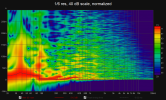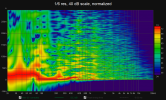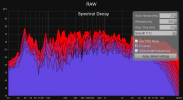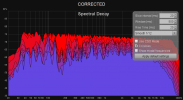After two weekends of dragging furniture (and guest bedroom mattresses) around, spreading blankets all over hard surfaces I could find, playing with REW, RePhase, DRC, Equalizer APO and Dirac Live, and listening to all my favorite songs, I have arrived at the most satisfying audio setup I have ever had in any of my homes.
My main complaint at first was that although my frequency response looked quite good, the sound was "messy". Most improvements I found were in the higher frequencies in the time domain - the before / after ETC comparison shows a lot:
Pretty much in order of most to least significant increase in perceived sound quality, these were the steps I took in the process:
- Moved the coffee table out of the way and placed woolen blankets all over the floor
- Helped against first, and second / third reflections from the ceiling
- Rotated my entire setup 90 degrees, moved my speakers closer together and moved the sofa closer
- Not super practical, but gives a symmetrical setup with side walls at 1.5 meters from the speakers
- No more reflections from the right wall
- Final speaker to speaker distance is 2.2m, listening position is 2.8m from each speaker.
- Great increase in imaging / stereo width compared to the asymmetrical setup
- Switched to a different amplifier
- Places mattresses behind the speakers
- Minor increase in mid bass performance
- Placed a woolen blanket over the sofa
- Removed minor reflections coming from the back cushioning
- Time domain EQ to align speaker drivers (Dirac / RePhase)
- Looks very pretty in the graphs but I haven't heard a difference (yet)
In my EQ I removed 90% of the filtering I originally had. I'm now listening with only a high shelf against the Klipsch's (RP280F's) famous treble and 3 peaking filters to dim some of the room modes - all below 150hz - and am honestly amazed by the sound these $449 speakers produce.
I'd like to thank everyone that helped me out with this - Especially
@ppataki for introducing me to time domain corrections in Dirac Live,
@Hipper for the great pointers on improving systems in general,
@ernestcarl for personally diving into my measurements.
I also hope to inspire anyone ever reading this to spread metaphorical blankets on their floor - I hugely underestimated what room acoustics / room treatment could do and couldn't have imagined the increase in enjoyment I'm getting from these speakers.
All the best!
- David




